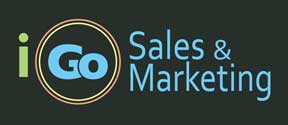Transportation Marketing Automation Overview
Marketing Automation is widely used throughout other industries but Trucking and Logistics companies seem slow to adopt Marketing Automation. Transportation Marketing Automation is a great way to fire start your sales team with qualified leads. Plus, because it’s automated, contact activity is no longer dependent upon the limitations of your sales team. Your sales team only have to deal with qualified leads that are identified in the marketing system as engaged interested buyers.
The key benefits of Marketing Automation in the transportation and logistics industries are lower cost per lead, lower sales cost per new customer, shorter sales cycles and increased sales per sales rep.
Let’s face it. There are unlimited people to call. Especially, in transportation and logistics as the number of shippers, consignees and third party payers increased daily in your database. You are limited by your sales reps and the number of contacts they can make in a day. Using marketing automation optimizes their time because they are only calling the best, most engaged, qualified leads when they are ready to ship.
Plus, marketing automation is a great way to educate your leads and position yourself as a market leader before your sales team makes the first call. Every introductory call will be a warm lead because they’ve already been contacted by email. This eliminates much of the resistance in introductory calls and allows your sales reps to communicate and pitch at a higher level.
How Marketing Automation Works
Step 1: Drive the Right Kind of Traffic to your Website
The right kind of traffic for your business can be driven in two ways. Firstly, organically through search marketing, this can be difficult. Thankfully, there is an easy way to get targeted traffic immediately. Google Ads drives leads to your website based on what people are looking for. For example if you’re a logistics company that specializes in moving Over Dimensional Freight, you’d want to serve up ads for searches like “Oversized Trucking Company”. The searcher sees your ad, goes to your specially designed landing page and fills out your form. This is called a “conversion”. Conversions are leads that self identify by filling out your contact form or calling you. An additional benefit for paid search advertising, particularly for the transportation and logistics industry is that you target searches geographically. Let’s say you need freight from Chicago back to Toronto, Ontario. You can serve up search ads for searches like “Canadian Carriers” only to appear in Chicago! This makes it easy to balance your laneways and pick up transactional traffic you need.
Step 2: Lead Collection
Leads are collect via your website. In order to maximize this effort, you website has to be designed in such a way to collect a lead. Effective websites have:
- Landing Pages (one page per service)
- Clear Calls to Action (“get a quote”, “request a call”)
- Lead Collection Forms
- Lead ID tracking
Step 3: Use the Information You Already Have
Trucking and Logistics companies collect all kinds of information about shippers, consignees and third party payers. With the addition of a few practices and procedures you can easily convert this information into a marketing database for your marketing automation efforts. Simply asking the shipper/consignee if they would like to receive more information about your company and then adding that information to a CRM (Customer Relationship Management System) allows you to send marketing campaigns to these contacts. You’re generally calling these people anyway to verify shipping and delivery information. Simply adding one more question to the call, builds your marketing database.
Step 4: Design a Timed Series of Emails (Drip Campaign)
Based on the start date when your new lead gets entered into your marketing funnel. You can send a timed series of emails. For example, initially you would send your introductory email that describes your company and what you do. Then you’d send emails that demonstrate your expertise in your chosen market niche. You can send an email every week or so out to 90 days.
The thing about transportation is if you are the “first call” when an opportunity arises, you’re likely to get a new client. Trying to be actively in front of a client with telemarketing or traditional sales visits is very expensive. With marketing automation, it just happens. The client let’s you know when they’re ready for a sales call.
Step 5: Lead Scoring
Sending emails to a leads is a great way to keep contact and keep your business “front of mind” when a need arises. However, you also need to know when clients are interested and you should be reaching out to them for a phone call. In my years working in transportation sales the hardest part of the day ways combing through a database of hundreds (often thousands) of leads to figure out who to call next. That was a huge time waster. What if you could know exactly when is a great time to call a lead when they actually are interested in hearing from you? Thankfully, this is easy with marketing automation.
Lead scoring allows you to know who your most engaged leads are.
Lead scoring allows you to know who your most engaged leads are. It works like this. First, you set up a scoring system. An example might be: email open =1 point, website click = 5 points, each web page visited = 1 point, a form fill or download = 50 points. Once you start tracking this information, it’s easy to see who your most engaged leads are.
Modern marketing automation software does all the tracking and scoring for you. Plus, you can integrate your CRM and schedule a call for your sales rep when a lead reaches, say 75 points. Now your sales reps are only calling engaged interested sales leads.
Why is Transportation such a great Application for Marketing Automation?
Transportation and Logistics are great applications for Marketing Automation because of the great number of leads a typical trucking or logistics company would generate, both through traditional marketing efforts and also through the collection of shipper and consignee data. Transportation and Logistics is also a service industry where buyers buy out of “need” rather “want”. So being able to be in front of a client and capture the moment the “need” is greatest is excellent information to pass along to your sales team.
Automation also saves your sales reps precious time so they don’t have to send out “follow up emails” to clients any more. All written communications (marketing/sales) will be automated and your sales team will have a list of engaged, interested leads to call upon.
How Do you Get Started with Marketing Automation?
The key to marketing automation is both having a good system and also the right software to perform the automation tasks as well as, track activity on your website, social media and email opens. Contact iGo Sales and Marketing today for a demo of how a typical marketing system works and the kind of information the marketing automation software can provide to your sales team. We will help you set up the software and the system to support a complete digital marketing campaign that will take your sales team to the next level.

